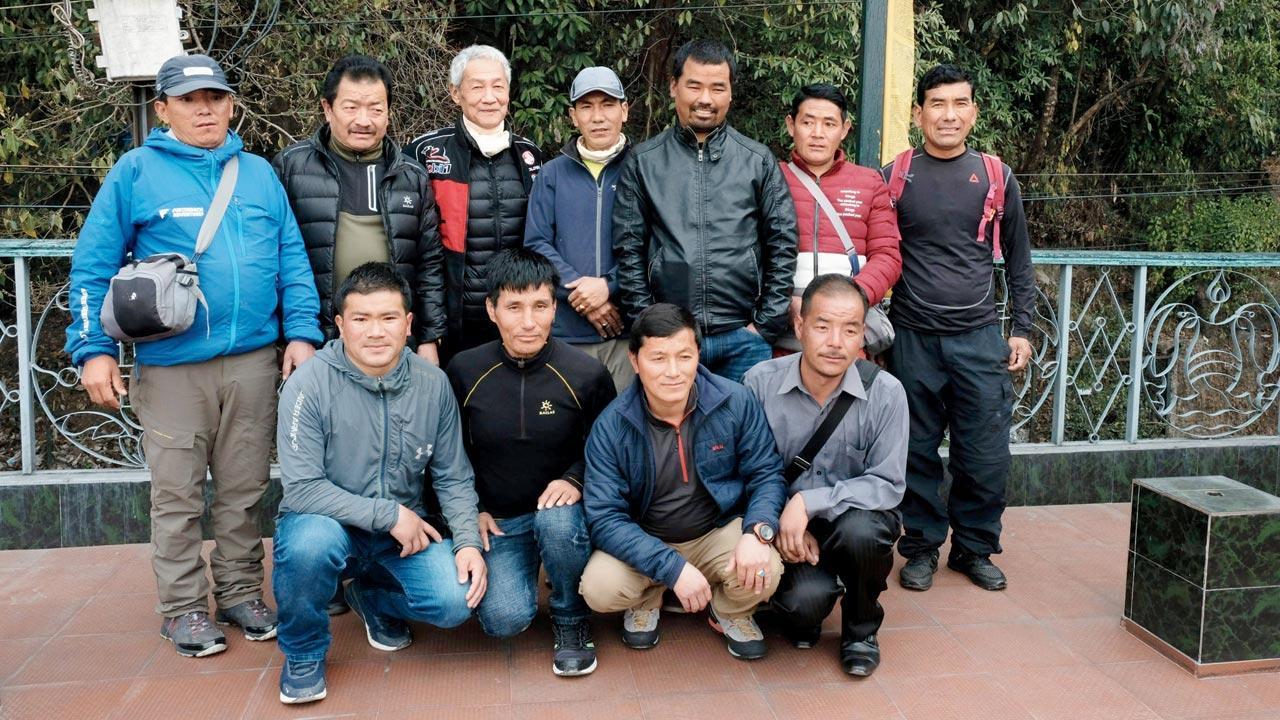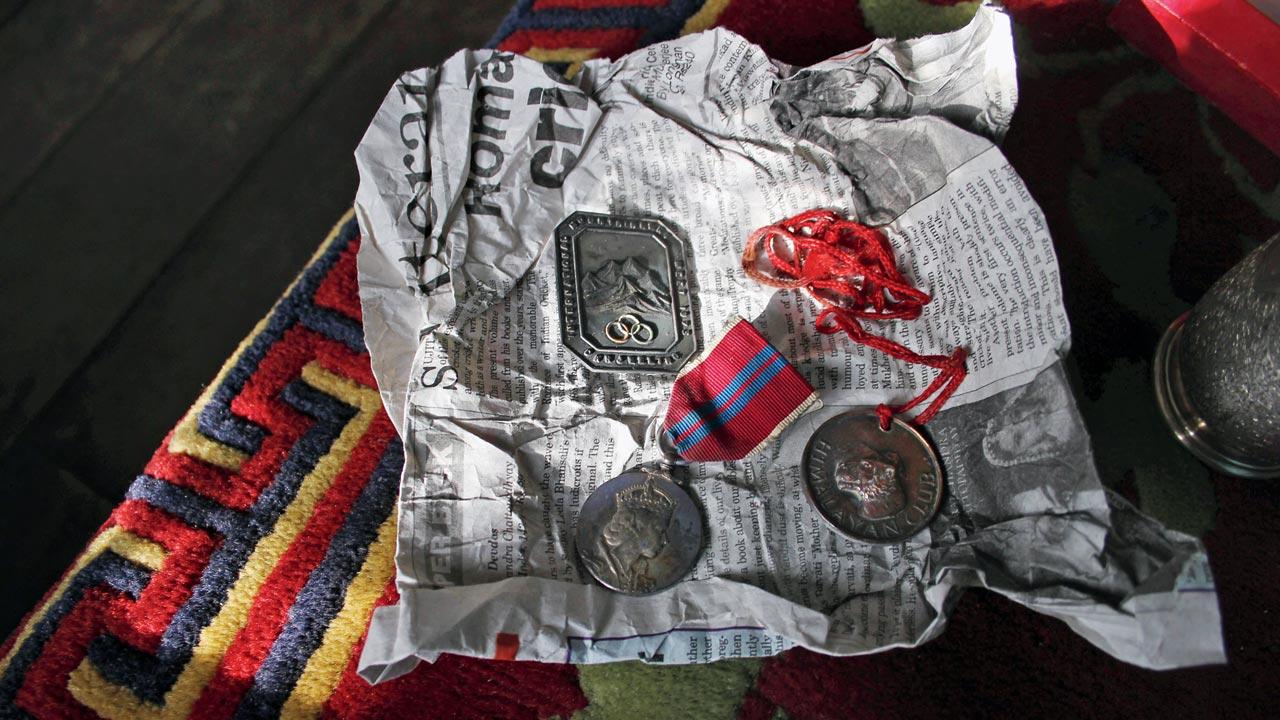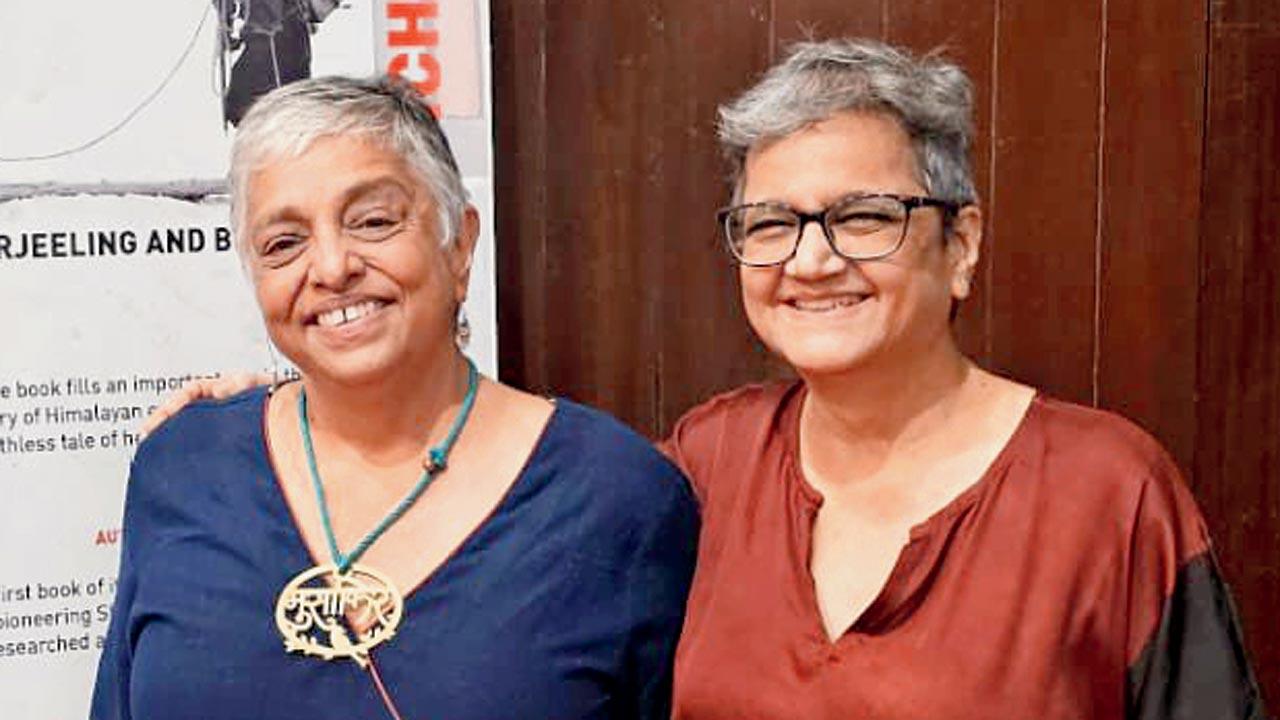Without them, mountaineering expeditions would be impossible. With a new book, two authors putting the spotlight on the Sherpa—and telling stories of unspoken dreams and everyday bravery

The Makalu Sherpas
Nestled amidst the verdant slopes of the Himalayas is Darjeeling, a town synonymous with tea gardens. In this tranquil hill station, a story was waiting to be told, woven from the heartbeats of its most illustrious inhabitants, the Sherpa and Bhutia communities. Authors Nandini Purandare, an avid trekker; and Deepa Balsavar, a storyteller and illustrator—both of whom have known each other for over two decades—set forth on a literary expedition to chronicle a narrative long overdue. Over a decade, this duo chased stories through the winding paths of Toong Soong (a Sherpa settlement for over a century), piecing together a mosaic of valour and unspoken histories.
Their journey begun with a call from the Himalayan peaks in April 2012 when Purandare embarked on a trek to Arunachal Pradesh, and the Sherpas’ untold legacy drew her in. “Treks with Harish [Kapadia, moutaineer-author] were always filled with lots of stories and anecdotes that revealed a vibrant tapestry of Sherpa life that needed to be documented,” shares Purandare. The seed was sown, and the duo set out to unearth the stories hidden from the folds of Toong Soong.
 Topgay Sherpa’s medals includes the Tiger Badge
Topgay Sherpa’s medals includes the Tiger Badge
Purandare and Balsavar spent years in Darjeeling, from the first death anniversary of a sherpa mountaineer Nawang Gombu (the first man in the world to have climbed Mount Everest twice) in 2012 till about 2020. During that time, they also met Nawang Topgay, the coveted Tiger Badge holder. Their key to the heart of Sherpa homes was Dorjee Lhatoo, who had also climbed Mt Everest and served in the Indian Army before joining the Himalayan Mountaineering Institute as instructor. He took the authors to sherpa homes, and narrated stories from his memories. Apart from gathering oral history, the authors also did lot of desk research by visiting the archives of The Himalayan Club’s journals, the library of the Himalayan Mountaineering Institute and the likes.
“Each home opened up like a book, each conversation a page turner,” shares Balsavar. They wove connections and painstakingly charted family trees to honour the Sherpa legacy. When not carrying loads on expeditions, Sherpas would chop and sell firewood, labour at construction sites, take tourists around on ponies, and a few farmed. The women made and sold chang (made from fermented rice), ran stores or worked as nannies for British families.
 Nandini Purandare
Nandini Purandare
Today, sherpas do several expeditions a year and are only home in winter, from December to March. During this time, they repair their homes, hone their skills and spend time with family.
The writers discovered the legacy of Tiger Badges, an award bestowed by the Himalayan Club since 1939 on sherpas for their exceptional skills, and met with the last guardians of this storied history. Tiger badge holders would get a higher pay to climb above a certain altitude, and their badges would make them preferred climbing partners. Expedition leaders were asked to recommend men for the badges, and 65 were given out till 1965.
“Meeting Topgay and Sona King Kong, one of the last Tiger Badge holders, was like touching a piece of history,” Purandare reminisces. Topgay was bedridden, and with some bitterness recounted the disappointment at not being chosen for the first Indian expedition to Mt Everest in 1960.
He passed away in November 2012, at the age of 82.
The authors discovered Sona “King Kong” while going through the list of Tiger Badge awardees of 1965. Of the eight names of the list, four were from Darjeeling, and only Sona was still alive. “Sona, a gentle giant, ambled shyly into the room with his daughter,” says Balsavar, “he was astonished that anyone would want to listen to his story.” It was Tenzing who gave him the nickname King Kong.
As Topgay’s name was missing from the list of awardees, the authors added his name to the official list of Tigers, and celebrate Sona as the last Tiger of Darjeeling.
As they delved deeper, Purandare and Balsavar encountered many narratives as varied as the Himalayan landscape.“Bringing forth the sherpanis’ strength and their contribution was revealing the heart of the Sherpa community,” Balsavar acknowledges.
Several young women had migrated from Khumbu in Nepal to Darjeeling during the golden years of Himalayan mountaineering, and one such was Daku Sherpa. She was 18 when she came to Toong Soong, and the authors met the 90-year-old in Gangtok. “Tall, broad-shouldered, and attractive, she radiated strength and vitality,” says Purandare. Dressed in the traditional Baku, she recalled: “As a porter, I went to Sandakphu (a 3,636-mt peak) first with English tourists. After that, I went with the Swiss to Everest in 1952, and was paid 8 annas a day. The load sometimes was as heavy as a grown man.”. Thereafter, Ani Daku would carry the canvas sacks filled with coins to pay porter salaries.“The sacks were too heavy to be carried by one person so we took turns,” she said. Ani Daku got married in 1955 at the age of 30, and stopped working as a porter but missed that life. “It was so much fun to roam around.” She was one of the porters in charge of carrying the coin bag in 1953 Mt. Everest expedition with Tenzing Norgay.
The tales that the authors they gathered captured a full spectrum of emotions. “The challenge was not in building trust, but in weaving together these stories,” says Balsavar. “Each story shared was a sacred trust, to be told with integrity. We aimed to weave a mosaic that faithfully represented the Sherpas’ lives.”
The duo’s distinct backgrounds—Purandare’s economic and trekking experience in the HImalayas; and Balsavar’s contribution to Indian children’s literature (she’s a Tata Trusts Big Little Book Awardee) combined to give life to The Sherpa Trail. “It was akin to climbing a mountain itself, filled with challenges such as tracing back people, stitching the stories together, but also immense joy,” Purandare confesses. “This book should encourage the sherpas to preserve their culture and give them a sense of pride in their work and community.”
The International edition of the book known as ‘Headstrap: Legends and Lore from the Climbing Sherpas of Darjeeling’ was released by Mountaineers Books in the US and the India rights of the book is with Roli Books. The book was launched in Mumbai on April 20 by the Himalayan Club.
 Subscribe today by clicking the link and stay updated with the latest news!" Click here!
Subscribe today by clicking the link and stay updated with the latest news!" Click here!










